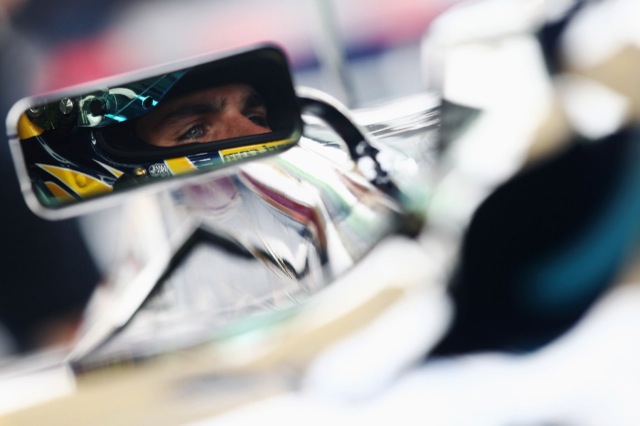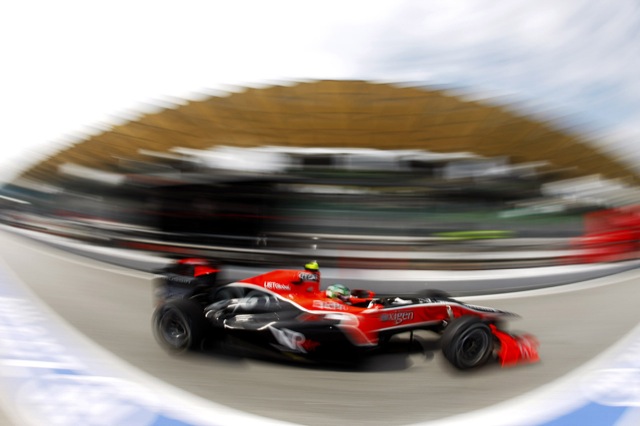Mercedes team principal Ross Brawn has asked the FIA to clarify the regulations regarding the suspension systems amid concerns that some teams may be using a form of active suspension to adjust the ride height of the car during qualifying and the race. With extra fuel required in the cars to get them through the race without the need of a top-up, the cars are having to be built higher to accommodate the weighting effect of the fuel. The clearance of a Formula One car is measured by a wooden plank that runs the length of the floor, and if too much is worn away after a race, sanctions are imposed on the infringing team.
Without this rule in place, the teams would build the cars to skim just off the surface of the road as the lower the centre of gravity, the better the car will perform. With extra fuel on-board though, the cars are now higher from the ground to ensure the plank remains intact throughout the grand prix. While the machine will be lighter towards the end of the race due to having less fuel in the tank, the car will be slightly higher which affects performance. Furthermore, when qualifying on fumes, the car will be performing at less-than-optimum at a time when it should be at its fastest.
To get around this, it may be that some teams have developed a form of active suspension that essentially adjusts the ride-height of the car, meaning the driver can lower the car during qualifying, gaining better performance, and raise it for the start of the race to protect the plank and ensure legality at the end of the race.
Martin Whitmarsh suggested that Red Bull Racing may be using this technology when he spoke to the BBC after qualifying and if deemed legal, he would implement on his McLaren cars.
I don’t know anything specific. There is some debate around the paddock as there normally is on these things, and there is an opportunity for us to have a look at it.
It is an area where frankly a few months ago if the engineers had come to us and said we need to design this system then I would have said I don’t think it is permissible.
But if there appears to be some evidence that perhaps such systems are considered legal, then we need to get one as soon as we can. Martin Whitmarsh.
Ross Brawn has asked the FIA’s technical delegate Charlie Whiting to clarify the situation, saying that accusations are being thrown around with no evidence to back them up and this is unfair.
I think we do need to tidy it up, in fairness to Red Bull because there are accusations being thrown around. It is very unfair. They have a very good car, and there is no evidence they are unnecessarily doing anything untoward.
You can do things with tyre pressures between qualifying and the race, which is a simple way of helping the situation. But it is necessary for the FIA to just clarify where we stand.
Our understanding – I can’t remember the article exactly, but you are not allowed to make any suspension changes between qualifying and the race. Anything that influences the suspension, be it gas pressure, be it the intentional manipulation of temperature, would have that effect. I think we need Charlie to clarify that to get rid of the controversy. Ross Brawn.
Brawn doesn’t believe Red Bull are doing anything untoward and suggested that they just simply have a very good car. However, others are questioning the qualifying pace of the RB6 which is significantly faster than the others, implying that they may be bending the rules a little in their favour.
Image © Red Bull Racing.


















Add comment